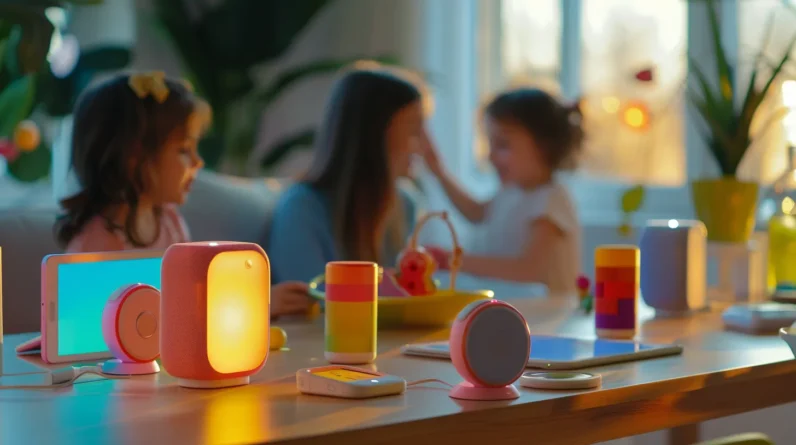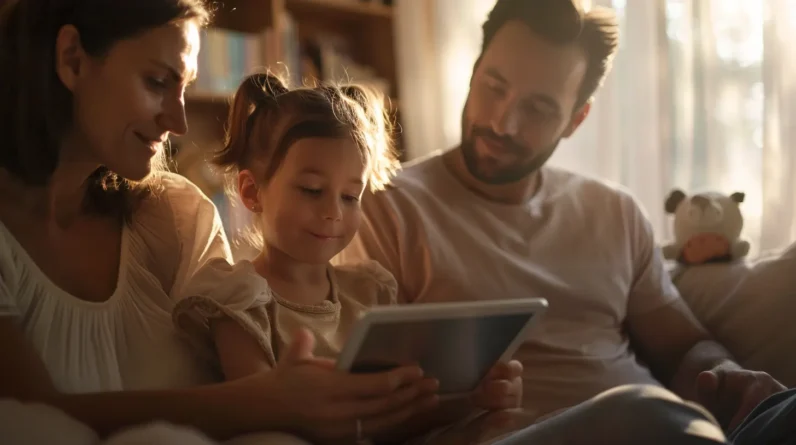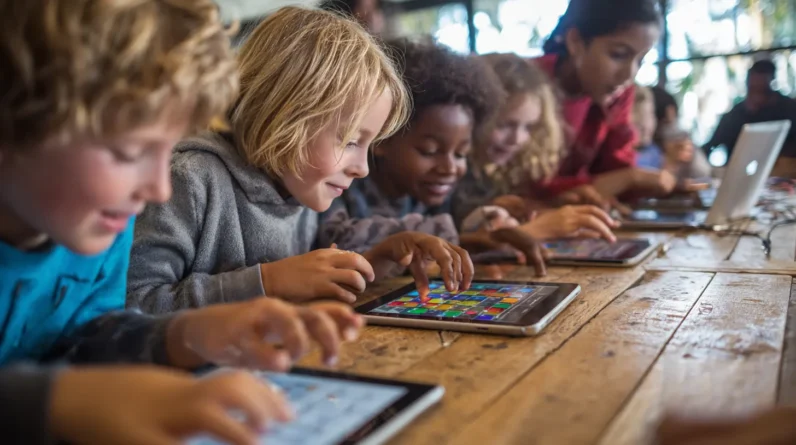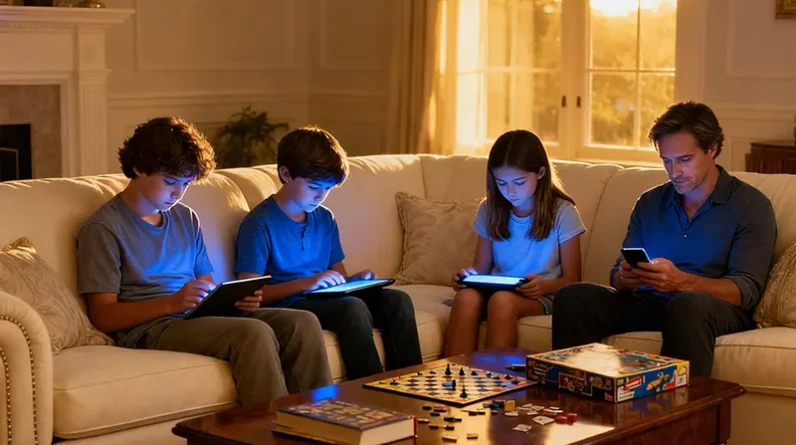
As tech-savvy families, we’re faced with a wide array of child-safe smart devices. Kid-friendly tablets offer secure digital environments, while smartwatches provide GPS tracking and communication features. Child-safe home assistants can be customized with age-appropriate content and parental controls. It’s crucial to implement robust parental control apps across all devices to monitor and manage our children’s digital activities. Educational smart toys blend learning with play, enhancing problem-solving skills and digital literacy. However, we must balance the benefits of these devices with potential risks, setting clear boundaries and prioritizing privacy. Let’s explore how to create a safe, enriching digital ecosystem for our little ones.
Kid-Friendly Tablets
Kid-friendly tablets offer a safe and controlled digital environment for children to learn, play, and explore. We recommend choosing devices with robust parental controls, age-appropriate content filters, and durable designs. Look for tablets with features like time limits, app restrictions, and educational content libraries.
Popular options include Amazon’s Fire Kids Edition, LeapFrog LeapPad, and Samsung’s Kids Tab. These devices often come with protective cases and warranties against accidental damage. We advise setting up separate user profiles for each child and regularly reviewing their usage patterns.
When selecting apps, prioritize those with educational value and minimal in-app purchases. It’s crucial to establish clear rules for tablet use and supervise children’s screen time. Remember, while kid-friendly tablets can be valuable learning tools, they shouldn’t replace hands-on play or face-to-face interaction. Balance is key in nurturing your child’s digital literacy.
Smart Watches for Children
With the rise of wearable technology, smart watches designed specifically for children have become increasingly popular. These devices offer a range of features that can keep our kids safe while giving them a taste of independence. When choosing a smart watch for your child, consider models that provide:
– GPS tracking for real-time location monitoring
– Two-way communication for calls and messages
– SOS buttons for emergency situations
We must be cautious, however, about potential privacy concerns and the impact of constant connectivity on our children’s development. It’s crucial to set clear boundaries and usage guidelines. Look for watches with robust parental controls that allow us to manage screen time, filter content, and limit interactions. By carefully selecting and monitoring these devices, we can harness their benefits while protecting our children from potential risks in the digital world.
Child-Safe Home Assistants
As our homes become increasingly connected, child-safe home assistants are emerging as valuable tools for families. These devices offer enhanced parental controls, age-appropriate content filters, and voice recognition technology to ensure a safer interactive experience for children.
We must be vigilant when selecting home assistants, prioritizing those with robust security features and privacy safeguards. Look for devices that allow customizable user profiles, enabling us to set specific permissions for each family member. It’s crucial to choose assistants with clear audio responses and simple commands that children can easily understand and use.
We should also consider home assistants that integrate seamlessly with other child-safe smart devices, creating a cohesive ecosystem of protection. By carefully selecting and configuring these assistants, we can harness their educational potential while maintaining a secure digital environment for our children.
Parental Control Apps
Parental control apps serve as a vital complement to child-safe home assistants, extending protection across various devices and platforms. We must recognize their importance in today’s digital landscape, where children’s online safety is paramount. These apps offer a range of features to monitor and manage our children’s digital activities:
– Content filtering and blocking
– Screen time management
– Location tracking and geofencing
Educational Smart Toys
Beyond traditional toys, educational smart toys have emerged as innovative tools for child development in the digital age. These interactive devices combine play with learning, offering benefits like improved problem-solving skills and enhanced digital literacy. However, we must approach their use with caution.
When selecting educational smart toys, we should prioritize age-appropriate content and robust security features. It’s crucial to verify that the toy’s data collection practices align with privacy standards and that it doesn’t have vulnerabilities that could compromise our children’s safety. We must also be mindful of screen time and ensure these toys don’t replace essential hands-on learning experiences.
Conclusion
We’ve explored a world of child-safe smart devices, yet isn’t it ironic that in our quest to protect our kids, we’re immersing them deeper into technology? While these gadgets offer security and learning opportunities, let’s not forget the value of unplugged experiences. As we embrace these innovations, we must remain vigilant. The smartest device in our children’s lives should always be their own minds, not the ones we put in their hands.







